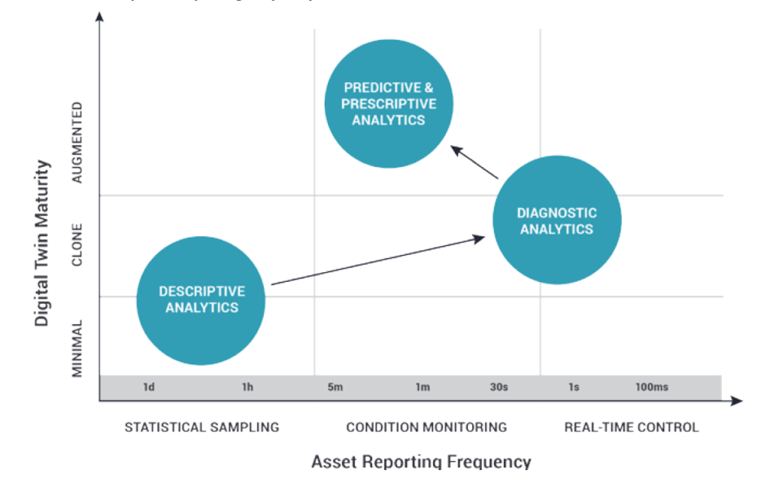Asset Reporting Frequency: Sampling, Monitoring, and Real-Time
by Exosite, on June 13, 2017
Once you know about the 3 types of digital twin maturity, you can start to understand how the digital twin reflects and anticipates time-based events from the real world, aka asset reporting frequency. The frequency of state and condition changes are reflected in a digital twin, which determines what decisions can be made using its own data.
Statistical Sampling
For statistical sampling, data is updated at a fixed sample rate that ensures a statistically significant cohort of data within a desired timeframe. There is no reaction to threshold or state-change observations, and efficiency is prioritized over timeliness (typically 1 minute to 1 day frequency).
Condition Monitoring
For condition monitoring, data is updated either at a fixed rate that is frequent enough to enable meaningful alerting to condition changes, or data is updated when edge devices detect a state/threshold change (typically 1 second to 1 hour frequency).
Real-Time Control
During a real-time control session, data is updated as frequently as possible within reasonable technological constraints, and low latency is prioritized over efficiency/cost. A persistent socket connection (e.g., websocket) is utilized and enables sub-second latency (100-300 ms).
The figure below shows the level of analytics maturity that can be achieved with a digital twin based on the data scope and reporting frequency used.

An example is a connected light bulb that requires the ability to respond to commands and report current power state in real time. Best-in-class digital twins start with a basic set of sensors and relatively infrequent sampling frequencies to prove the technical feasibility of connecting a physical asset to its digital twin. At this stage, basic descriptive analytics (what the current state of the asset is and what events of interest may have occurred) are possible.
With the technical feasibility of the digital twin proven, additional sensors are often added to the asset and the reporting frequency is increased to provide better granularity and insight into specific performance aspects of the asset and/or more contextual data leading up to error conditions. At this stage, diagnostic analytics are able to ask why certain events of interest occurred.
With a baseline of asset health, performance data, and the inclusion of additional sources of data such as maintenance history, account data, parts data, and other adjacent data sources (such as the environment surrounding the asset), the maturity of the digital twin can be improved to an augmented status where it may be possible to reduce the number of sensors and reporting frequency.
It is this augmented digital twin that becomes, in many ways, more valuable than the physical asset itself and enables a range of predictive analytics (what will likely happen in the future) and prescriptive analytics (what should be done to prevent mechanical failure or reduce downtime) that unlock the true value of IoT.
Read our Augmented Digital Twin white paper and start creating digital twins for your own products today with a free account on Murano, our IoT platform.



